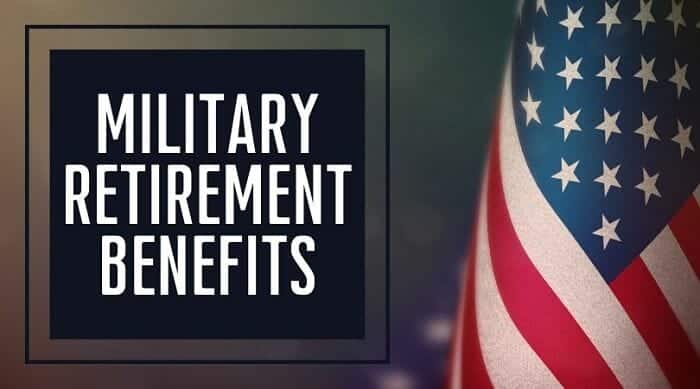Military Retirement Benefits
Updated: November 8, 2022
When you become retirement-eligible as a military member, what military retirement benefits can you look forward to after you’ve started transitioning to life as a civilian? The more you know about retirement benefits before your journey begins, the better.
Things To Do, Pre-Retirement
Before you go into official retired military status, there are some benefits you’ll want to use. One is permissive temporary duty (TDY) for house hunting. his option allows your command to cut TDY orders to help you find housing ahead of your final out-processing or in conjunction with terminal leave.
Permissive TDY for house hunting is not automatically approved, and mission requirements will determine whether you are allowed to take this option. However, it’s worth exploring because it buys you time to find a new home while still drawing your full military pay, allowances and benefits.
You’ll also want to get a final physical and dental appointment on the way out of your final assignment. This isn’t just useful for making sure you are in good health as you head into a new set of major life changes, but it’s also helpful for making claims for VA compensation for service-connected medical issues.
Your final appointments in the military healthcare system may be crucial for these claims.
Military Retirement Benefits
Retirement And Disability Pay
When contemplating military retirement, the benefit most people think of first is retirement pay. There are many different types of retirement pay, including:
- Regular and Reserve retirement payments.
- Temporary and permanent disability retirement payments.
- Concurrent retirement and disability pay.
- Combat-related special compensation payments.
- Survivor Benefit Plan payments.
Some retirement pay is designated as temporary and some is not. The amount of retirement pay you draw will depend on a variety of factors, including whether you are an officer or enlisted at retirement time, which retirement plan you opted into and how long you served.
Retirement pay isn’t the only option for those who have spent the minimum time in service to retire. VA disability pay is also an option in a variety of circumstances:
- Additional (tax-free) benefits for Veterans injured while in the service.
- Ratings for service-connected disability codes.
- Ratings for special monthly compensation.
- Individual unemployment ratings.
- Rerating you if you feel your disability has increased.
Retired veterans may have to choose between disability pay and retirement pay. You’ll want to ask your transition assistance counselor or VA rep about the advantages of choosing one over the other depending on your personal circumstances.
Final Relocation: The earliest available military retirement benefit you have is the government-paid final relocation move. You have a full calendar year from your official date of retirement to use your final Department of Defense-funded move to your home of record, or “anywhere within the United States”.
Moving is stressful and costly. You definitely want to take advantage of this benefit. You can ask your command support staff about this option prior to your final out-processing appointment or discuss it during transition assistance appointments.
Base Access For Commissary, BX/PX and Other Needs
Military retirees and their immediate family members qualify for base access with their official, unexpired retiree ID cards issued by the DoD. You will need to apply for ID cards for yourself and your family via your base or installation Pass & ID office or similar on-base service provider.
These ID cards allow entry to the base, the use of the commissary and Base Exchange(BX)/Post Exchange (PX) and any available medical services on post. Not all bases have the same services or access for retirees. Your options for on-base services may also include base pharmacies, fitness centers, golf courses and other recreational offerings.
Retiree access also includes perks such as being welcome at certain Morale, Welfare, And Recreation facilities, like RV parks and camping areas.
Space-Available Travel
Military retirees and family members with current, unexpired DoD-issued retiree IDs are allowed to fly on military aircraft on a space-available basis. This is true as mission needs permit, is available overseas as well as stateside and is open to retirees and family members with a valid identification card as long as they are accompanied by a sponsor. Space A travel has a priority list. Retirees are in Category Six, out of six categories. It’s true that retirees have the lowest Space-A priority, but the option is there. Contact the military passenger terminal at a base near you to determine whether Space A flights are possible from your current location.
Insurance Options
Life insurance plans you had while serving may require you to transition to the retired military version. For example, your Servicemembers’ Group Life Insurance (SGLI) plan is effective for 120 days after retirement. You will need to switch to the Veterans’ Group Life Insurance (VGLI) plan within that time frame.
Veterans who do not switch within 120 days are subject to a requirement that they prove they are in good health.
Regarding medical options, retiring service members can enroll in vision and dental insurance via a benefits program for federal employees and military members called FEDVIP. There is an open enrollment period, but you can also enroll when you have a qualifying life event.
Retirees can also enroll themselves and family members in the retirement version of TRICARE. You must enroll yourself and your family members or risk losing your existing TRICARE benefits. TRICARE requires signups for coverage even if the family members have Medicare Part A or Part B.
The Survivor Benefit Plan is another option service members should ideally begin learning about pre-retirement. This plan, commonly abbreviated as SBP, is designed to pay part of your military retirement pay to your spouse or other beneficiaries.
Service members are automatically enrolled as long as they have a qualifying beneficiary at the maximum payout level (unless otherwise selected). You can learn more about this program via your base Transition Assistance Program or the Defense Finance and Accounting Agency’s website.
GI Bill And Other VA Education Benefits
Military retirees have the option to use their GI Bill benefits after retirement, but there are also state-level education programs, including tuition and fee coverage for qualifying veterans and retirees. You’ll want to compare the state benefits to your GI Bill benefits and decide which to use first and why.
It is true that the Post 9/11 GI Bill may be transferred to dependents and spouses, but if you did not transfer your GI Bill to them while serving on active duty, your ability to transfer has ended.
That is one reason why it’s a very good idea to explore both state-level veteran benefits sites and the VA’s site for other options your spouse and children can use if you have qualifying military service for those programs.
VA Home Loan Program
VA home loans are for service members with qualifying military service and certain qualifying surviving spouses of military members who died as a result of military service. VA mortgages feature no-money-down home loans and refinance loans.
Veterans and spouses can apply together, but spouses (except for surviving spouses) cannot apply for VA loans without the veteran unless the spouse also qualifies for the program with a minimum amount of military service. Dependent children cannot apply for the VA loan program without qualifying military service.


































































